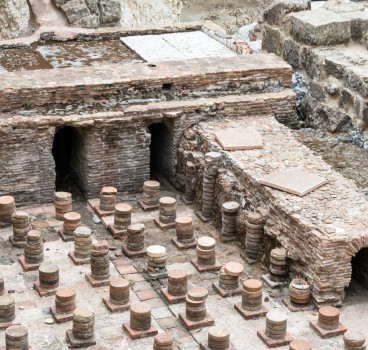Designing vertical farms in the sky
There are some big cities in the world where you can look out of your window at a vibrant tapestry of lettuce, kale, and herbs cascading down the side of an apartment building. This is not science fiction - it's the rising trend of vertical farms in the sky, a solution gaining traction as cities seek innovative ways to address food security, sustainability, and the ever-growing demand for fresh, local produce.
The need is real, with urbanization booming and arable land dwindling, traditional agriculture is struggling to keep pace. The United Nations estimates that by 2050, the global population will reach 9.7 billion, with two-thirds living in urban areas. This puts immense pressure on food production systems, demanding innovative solutions like vertical farming.
What are Vertical Farms?
These controlled-environment facilities stack growing layers vertically, utilising hydroponics or aeroponics to cultivate crops without soil. Artificial lighting, climate control, and nutrient delivery systems optimise growth, allowing farms to operate year-round, regardless of weather or season.
While most vertical farms currently occupy warehouses or repurposed buildings, the idea of integrating them into high rise apartments, is gaining momentum. These sky farms offer several advantages by maximising land use - offering vertical space in abundance and allowing cities to produce food. This reduces reliance on rural land and transportation costs.
Locally grown food means shorter transport distances, lessening carbon emissions and fuel consumption. Additionally, controlled environments in vertical farms use less water and pesticides compared to traditional agriculture.
Cities enjoy access to hyper-local, ultra-fresh produce picked at peak ripeness, maximising nutritional value and flavour. Green, vibrant high-rise buildings can also transform cityscapes, bringing nature into the urban environment and improving air quality.
Sky Farming Pioneers
Several initiatives across the globe already showcase the potential of this new trend. Sky Greens, a pioneer in this field, operates nine-metre-tall towers that produce vegetables for local supermarkets in Singapore.
The aptly named Vertical Harvest in Shanghai boasts a 28-story vertical farm producing tons of leafy greens annually. Paris is exploring integrating vertical farms into the construction of a new eco-district and in Italy, plans are underway for a 50-story "vertical forest" in Milan, featuring residential space and integrated urban farming.
Challenges and the Road Ahead
Despite the promise, sky farms face challenges. High initial investment costs, energy needs, and technical complexities demand innovative solutions and collaboration between architects, engineers, and agricultural experts. Additionally, integrating these farms into existing cityscapes requires careful planning and infrastructure considerations.
While it's too early to predict if sky farms will become ubiquitous, their potential is undeniable. As cities grow and food security concerns mount, vertical farming in all its forms, offers a glimpse into a more sustainable and resilient future.
Looking beyond the hype, several key questions must be addressed - can technology advancements bring down costs and energy consumption? Can effective partnerships and financial models be developed to incentivise urban vertical farming? And can social inclusion be fostered, ensuring everyone has access to the benefits of locally grown food?
Ultimately, the success of sky farms hinges on not just technological innovation but also on addressing social and economic considerations. By working collaboratively and creatively, cities can leverage these futuristic farms to nourish not just their populations but also a more sustainable future.
Sources:
- World Economic Forum: https://www.weforum.org/agenda/2023/06/how-vertical-farming-can-save-water-and-support-food-security/
- The Guardian: https://www.theguardian.com/environment/2022/aug/21/the-rise-of-vertical-farms-could-indoor-plant-factories-be-the-norm-in-10-years
- Vertical Harvest: https://verticalharvestfarms.com/
- Sky Greens: https://www.skygreens.com/
- Food Tank: https://foodtank.com/news/2023/08/from-farm-to-planet-lessons-on-building-multigenerational-farming-and-food-systems/
Additional Articles

Why modern builders still use tools invented thousands of years ago
Walk onto a modern construction site and you will see plenty of laser levels, drones, tablets and power tools. Yet look a little closer and something unexpected becomes clear. Alongside all this...
Read moreThe elevator that changed the world when Elisha Otis cut the rope
Today, stepping into a lift is one of the most routine acts of modern life. We press a button, glance at the floor indicator, and trust, almost without thinking. that a metal box will safely carry us...
Read more

How the Romans invented central heating
Central heating feels like a modern convenience, yet its core principles were mastered nearly two thousand years ago. Long before boilers, radiators and underfloor heating systems, the Romans...
Read more